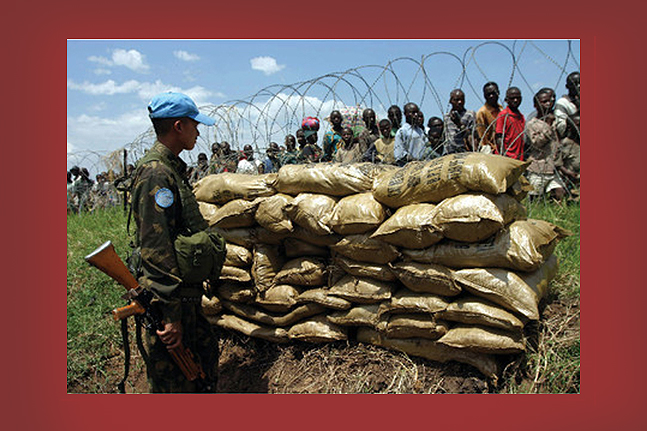Blog, Environment and Conflict, International Conflict
On trade, conflict, and interventions: Between economic interest and peace
Between 1957 and 2007 there were more than 400 economic, diplomatic, and military conflict interventions worldwide. While theories around the positive and negative impacts of conflict interventions abound, there is no consensus on their overall effect. For example, an arms influx for an opposition group could transform them from nonviolent to violent. Conversely, economic aid for a government could very well increase their capacity to protect or oppress. In fact, a comprehensive study on conflict interventions during times of instability confirmed that without considering key contextual factors, it is not possible to predict the resumption of stability or civil war before an intervention (Regan & Meachum, 2014). However, recent research suggests that economic interests and access to natural resources explain some of the motives and outcomes of many interventions. Is the promotion of stability what really motivates intervention? Research has found that international security and humanitarian concerns, as well as interest in promoting stability to facilitate trade, are indeed main drivers of interventions. Stojek and Chacha (2015) studied conflict interventions between 1950 and 1999, finding that bilateral trade and security can motivate parties to invest in the stability of economic partners by aiding the state, with one exception. When it comes to conflicts involving natural resources, interveners tend to support rebel forces to the detriment of governments. In fact, another study of interventions during the same time period found that the presence of resources that could potentially be seized in a conflict increases the likelihood of interventions by 70-80% (Findley & Marineau, 2014). External actors that support rebel groups with access to natural resources in conflict situations do so as a way to gain control over resources, fueling the conflict towards a desired end. In other words, the goal of a conflict intervention in these cases is often not the promotion of stability. It is becoming increasingly clear that the motives of conflict interventions are not limited to humanitarian and security concerns. Furthermore, their consequences can serve to alleviate, but also to fuel violent conflict.
Findley, M. G., & Marineau, J. F. (2014). Lootable resources and third-party intervention into civil wars. Conflict Management and Peace Science, 0738894214530828.
Regan, P. M., & Meachum, M. S. (2014). Data on interventions during periods of political instability. Journal of Peace Research, 51(1), 127-135.
Stojek, S. M., & Chacha, M. (2015). Adding trade to the equation Multilevel modeling of biased civil war interventions. Journal of Peace Research, 52(2), 228-242.
Photo source: http://www.carnegiecouncil.org/calendar/data/0523.html
Categories: Blog, Environment and Conflict, International Conflict
Published July 2, 2015
